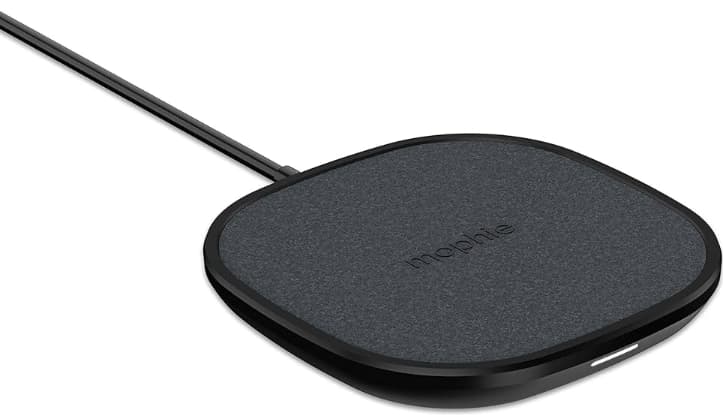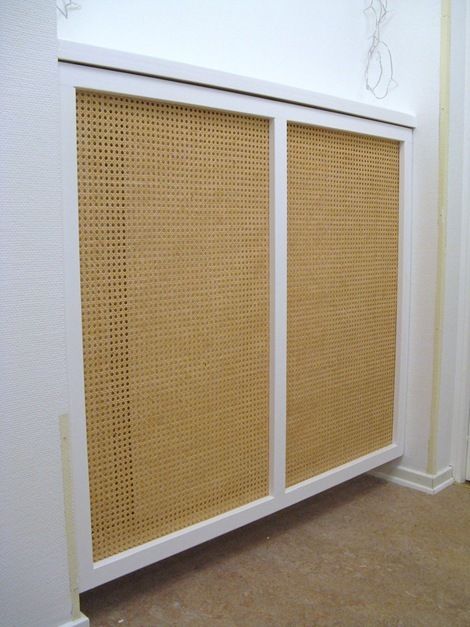Wireless charging technology promises to make charging our phones and devices as easy as setting them down on a pad. No more fumbling with cables! Just effortless wireless power! However, this tech doesn’t always work perfectly. If your Mophie wireless charger suddenly stops juicing up your phone or other devices, it can quickly go from a convenience to a frustration.
But don’t give up on wire-free charging just yet. In many cases, you can get your wireless charging pad working again with some basic troubleshooting and adjustments.
Mophie Wireless Charging Pad Not Working

In this comprehensive guide, I’ll walk through the top reasons your Mophie wireless charger may not be functioning and how to get it charging properly again.
Also Learn:
- Samsung RB215Lash Freezer Not Working
- Structures E255 Adjustable Base Not Working
- GE XL44 Oven Not Working
- Kitchenaid KSCS25INSS00 Ice Maker Not Working
How Does Wireless Charging Work?
Before jumping into the fixes, let’s briefly look at how wireless charging functions so you better understand the troubleshooting tips.
- Wireless charging relies on electromagnetic induction between two coils – a transmitter coil in the charging pad and a receiver coil in your phone or device.
- An alternating current in the transmitter coil generates a magnetic field, which induces a current in the receiver coil to charge your device’s battery.
- For this to work efficiently, the charging coils need to be aligned properly, usually within 5mm of each other.
Keeping these basics in mind will help comprehend the solutions covered next. Now let’s focus on getting your wireless charger back up and running!
Top 10 Reasons a Mophie Wireless Charging Pad Not Working
Here are the most common culprits when a Mophie wireless charging pad fails to charge properly:
- Incorrect or faulty power adapter – The charger needs an adapter capable of at least 7.5W. Lower-powered adapters can prevent charging.
- Damaged USB cable – Faulty cables will impact power delivery to the wireless charger.
- Uneven charging surface – For good coil alignment, the pad needs a flat, level surface.
- Improper device placement – The device must be centered on the pad’s charging area for efficient power transfer.
- Thick phone case – Bulky cases push devices away from the charging coils, causing issues.
- Phone vibrations – Notifications and vibrations shift the device’s position, interrupting charging.
- Outdated device software – Old OS versions may not properly support wireless charging.
- Metallic interference – Nearby metal objects can disrupt the electromagnetic charging field.
- Faulty or defective unit – If all else fails, the wireless charger itself may be malfunctioning.
- Incompatible or non-wireless charging phone – The device must specifically support wireless charging capability.
Carefully checking each of these potential issues can reveal why your wireless charger stopped working and what needs to be done to fix it.
Step-by-Step Troubleshooting Guide to Fix Mophie Wireless Charging Pad Not Working
With the common culprits in mind, follow these troubleshooting steps to get your faulty wireless charger up and running again:
1. Ensure You’re Using the Correct Adapter and USB Cable
The Mophie wireless charging pad needs adequate power delivery for efficient charging:
- Use the original power adapter that came with your wireless charger if possible.
- If using a different adapter, verify it provides at least a 7.5W output rating. Lower-powered adapters may be insufficient.
- Check that the USB cable between the adapter and wireless charger is not frayed, broken, or loose. Try swapping with a high-quality cable if needed.
Using the right adapter and cable guarantees steady, uninterrupted power to your wireless charging pad.
2. Place the Charging Pad on a Flat, Level Surface
- For ideal coil alignment, the wireless charging pad needs a flat, even surface underneath it.
- Avoid soft surfaces like beds, cushions, rugs, etc. These can compress unevenly under the pad’s weight and throw off coil positioning.
- Hard, flat surfaces like wood, plastic, glass, etc. will keep the charging pad properly oriented.
- Try different stable, level surfaces around your home or office to find the optimal wireless charging spot.
3. Perfectly Center Your Device on the Charging Area
In addition to an even surface below, you also need to place your phone centered on the charging pad’s active area:
- Most wireless chargers have an indicator of the charging area, usually a raised ring or dot.
- Carefully align your phone directly over this marker for proper coil-to-coil positioning.
- Double-check your user manual for the exact device placement guidance.
- Being too far off-center can misalign the internal coils and disrupt charging.
4. Remove Any Thick Phone Case Before Charging
Another key factor for good coil alignment is eliminating any bulky phone case:
- Most basic cases under 5mm thickness won’t impact wireless charging.
- However, thick or rugged cases can push the phone away from the charging pad coils.
- For best results, remove the case entirely while wirelessly charging your phone.
- You can also replace an overly thick case with a thin, wireless charging compatible case instead.
Keeping your phone and the charger close together maximizes power transfer efficiency.
5. Toggle Off Notifications and Vibrations Temporarily
Here is an easy software fix to try if your phone seems to be charging fine initially but then stops:
- When your phone vibrates or rings with incoming alerts, it shifts position on the pad, knocking coils out of alignment.
- This causes the charging process to pause and restart as the phone moves.
- By turning on airplane mode or Do Not Disturb while charging, you prevent vibrations/notifications from interrupting charging.
- Your phone will hold its position better on the pad for consistent charging.
6. Restart Your Phone Before Placing on the Charger
- Over time, minor software glitches from apps, memory issues, etc. can build up and affect charging.
- Fully restarting your phone before charging gives the charging system a clean slate.
- Let the phone reboot completely, then place it on the wireless charger.
- Restarting will often clear up any operating system issues inhibiting wireless charging.
Follow the basic restart steps for your phone’s operating system:
| Phone OS | Restart Steps |
|---|---|
| iPhone |
|
| Android |
|
7. Try Resetting Network Settings on iPhone
- For iPhones, resetting network settings can resolve wireless charger issues in some cases.
- This wipes all Wi-Fi, Bluetooth, cellular, and other connectivity settings.
- Clearing these out eliminates any conflicts that may be blocking wireless charging capability.
Follow these steps to reset an iPhone’s network settings:
- Go to Settings > General > Reset
- Tap Reset Network Settings
- Enter passcode if prompted
- Confirm the reset
8. Check for Device and Charger Firmware Updates
Another key step is ensuring you have the latest firmware on both devices:
- Wireless charging relies on up-to-date firmware for best performance.
- Check your phone is running the newest OS version – visit Settings > System > System Update.
- For the Mophie charger, check their website for any charger firmware updates.
Keeping both halves of the wireless charging equation up-to-date maximizes compatibility and efficiency.
9. Replace Your Phone Case with a Wireless Charging-Friendly Model
As noted above, even thin cases can sometimes develop issues over time:
- Materials compressing or shifting in an older case can impact wireless charging over time.
- If you’ve tried other troubleshooting, try charging your bare phone directly on the pad as a test.
- If this works, your current case is likely the issue.
- Consider replacing your case with one designed for hassle-free wireless charging.
- Look for ultra-thin yet protective cases that won’t interfere with power transmission.
10. Check the Area Around the Charger for Metallic Objects
Since wireless charging relies on magnetic induction, metal objects can interrupt the process:
- Scan the area around and under the charging pad for potential sources of metallic interference.
- Remove any loose metal objects within a 12-inch radius of the wireless charger.
- Also, check your phone and case for any metal plates, parts, or components.
- You can place a cloth or napkin between the phone and charger if needed to prevent metal contact issues.
Eliminating metallic interference improves wireless charging speed and efficiency.
When to Replace a Defective Wireless Charging Pad
If you’ve diligently tried all the troubleshooting tips above and your wireless charger still fails to charge properly, the unit itself is likely defective and needs replacing.
Signs your Mophie wireless charger may be malfunctioning include:
- No indicator lights when connected to the power.
- Error sequence from LED lights (check user guide).
- A burning smell coming from the pad.
- Loud buzzing or whining noises.
- Excessively hot temperature during use.
- Fails charging tests with multiple phones.
Any of these issues typically indicate an internal problem with the wireless charging pad hardware itself.
Mophie wireless chargers come with at least a 1-year limited warranty. If your unit exhibits any signs of defects, get in touch with Mophie’s customer support team for troubleshooting help and product replacement if needed.
Don’t let one faulty charger turn you off wireless charging! With so many benefits, it’s worth the effort to get your wireless pad working again.
Frequently Asked Troubleshooting Questions:
What is the best Mophie wireless charging pad overall?
Some top-rated Mophie wireless chargers include:
- Charge Stream Pad – Provides up to 10W fast charging.
- Charge Stream Pad Mini – Compact 7.5W wireless charger.
- Charge Stream Pad+ – Offers faster 15W charging speeds.
Why does my phone repeatedly connect/disconnect from the wireless charger?
Frequent connecting and disconnecting often stems from:
- Misalignment from the uneven surface
- Interference from a phone case
- Improper positioning on the pad
Refer to the alignment tips above to resolve.
Why does my phone get hot when using the wireless charging pad?
Excessive heat can be caused by:
- Lower powered adapter (use 7.5W+)
- Faulty or damaged USB cable
- Nearby metal objects interfering
What are some alternatives to a wireless charging pad?
Options include:
- Wireless PowerShare on new Samsung phones to charge devices directly on the phone back.
- Wireless charging cases – Cases with embedded wireless charging coil.
- However, wireless pads offer the most convenience overall.
What wireless charging standards should my phone support?
Most phones use the Qi wireless standard. Samsung also supports Fast Charge wireless charging. Check your phone specs to confirm compatibility.
Do I need a special wireless charging-enabled phone?
Nearly any phone released in the past 5 years supports wireless charging. However, some budget models still lack this capability. Ensure your phone specifically states wireless or inductive charging support before purchasing a wireless charger.
In Summary
When your wireless charging experience stutters to a stop, don’t immediately give up. In many instances, you can get a non-working wireless charger up and running again with basic troubleshooting:
- Verify adapter, cable, firmware
- Adjust the charging surface, position
- Remove or replace the phone case
- Toggle notifications off
- Restart and reset the phone
- Check for software glitches
- Scan for metal interference
Hopefully, the detailed tips in this guide will help you pinpoint why your Mophie wireless charging pad not working and what fixes are needed.
With wireless charging offering such convenience for powering our devices, it’s worth the effort to resolve minor issues that arise.


